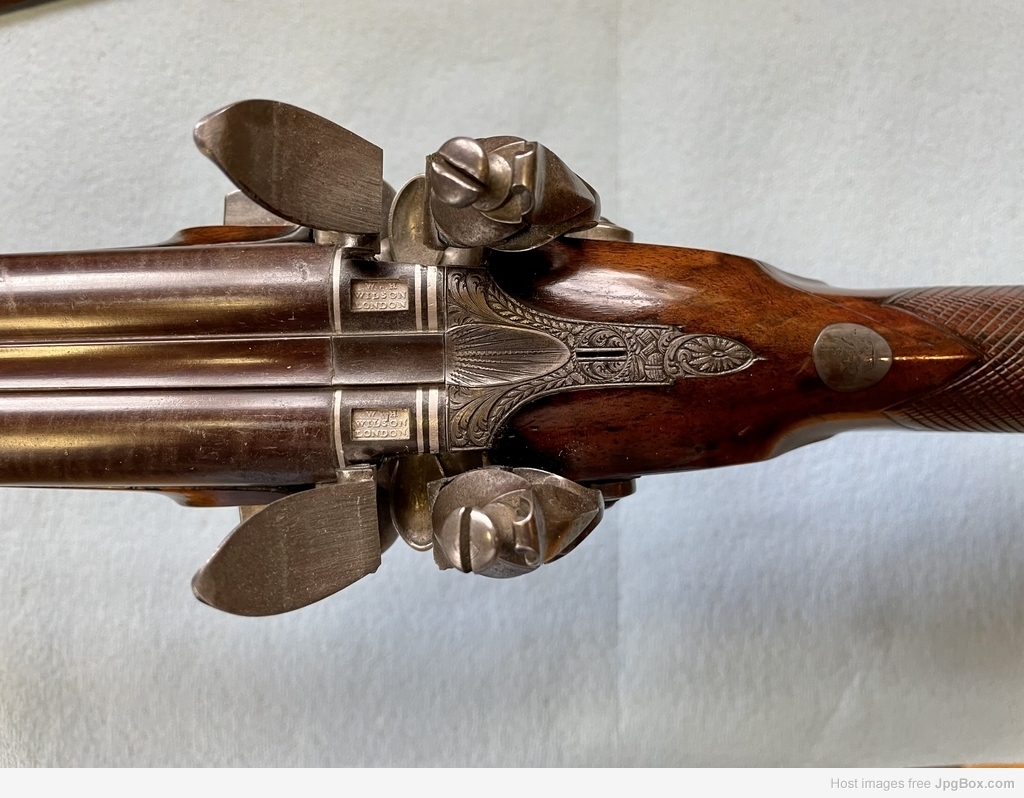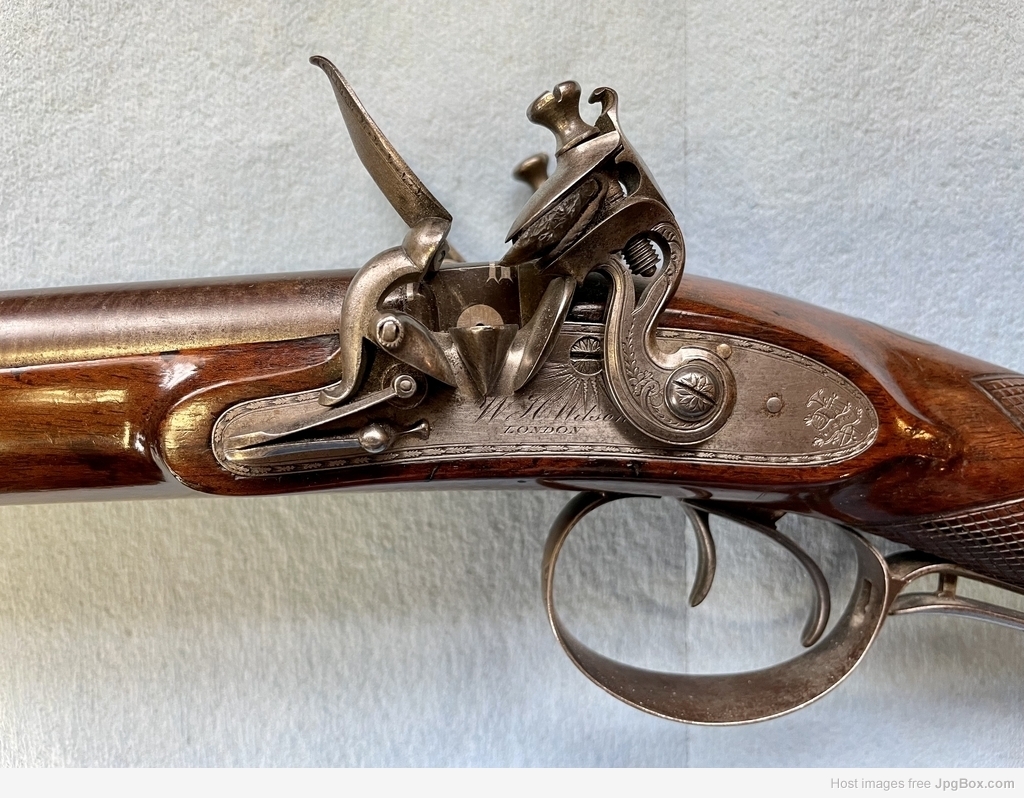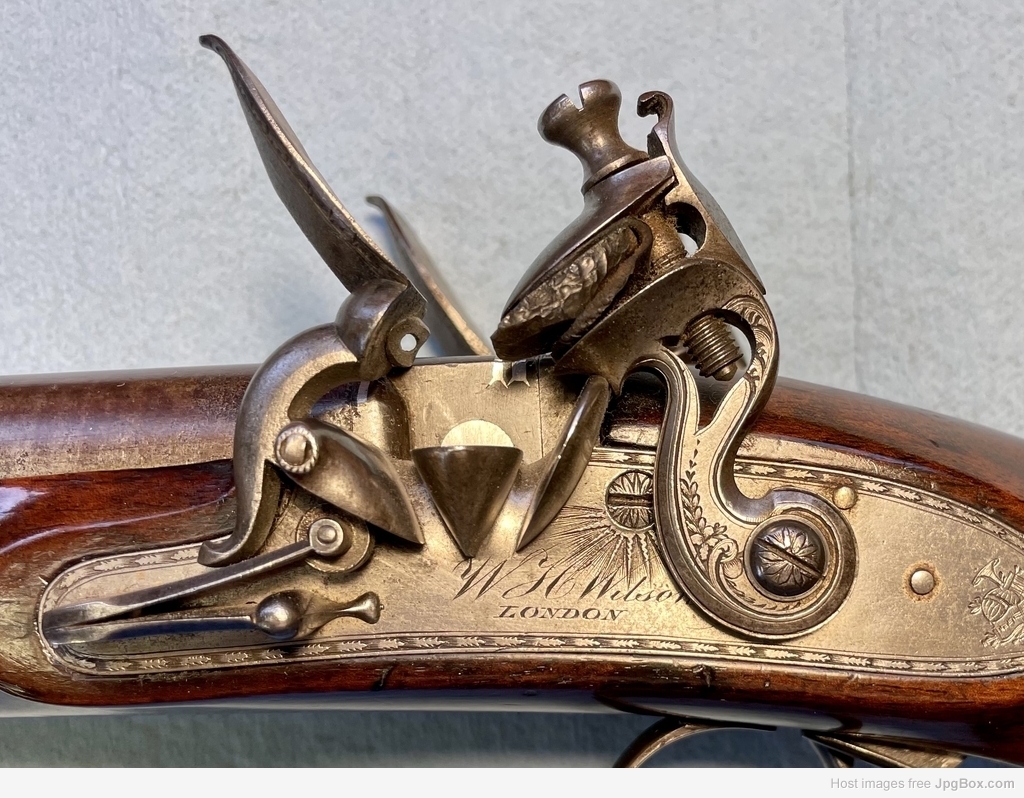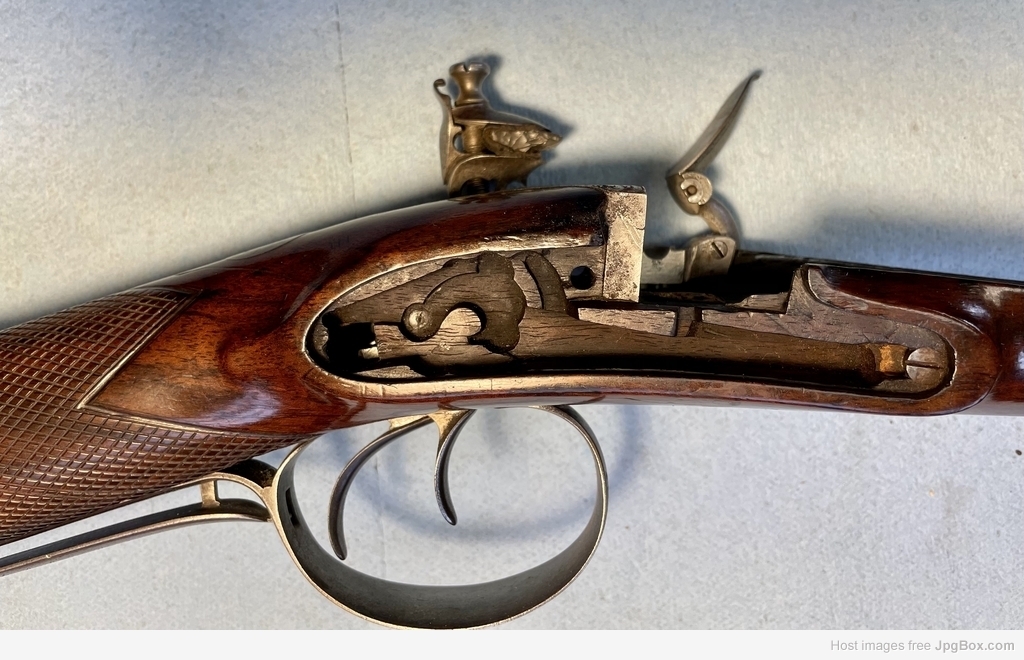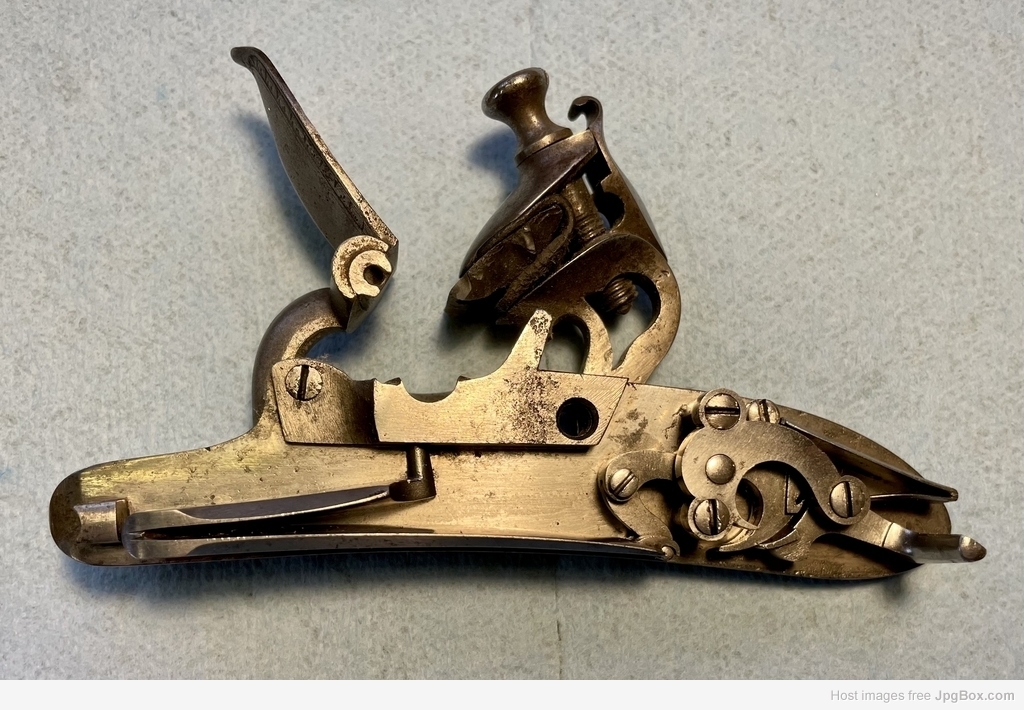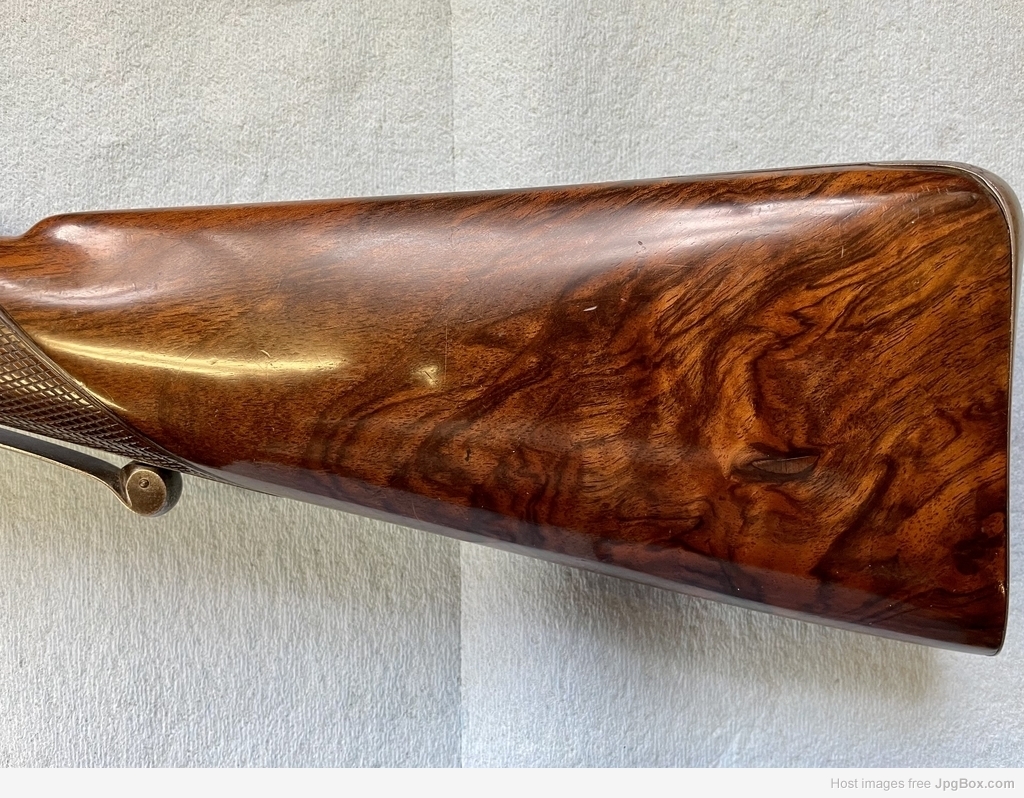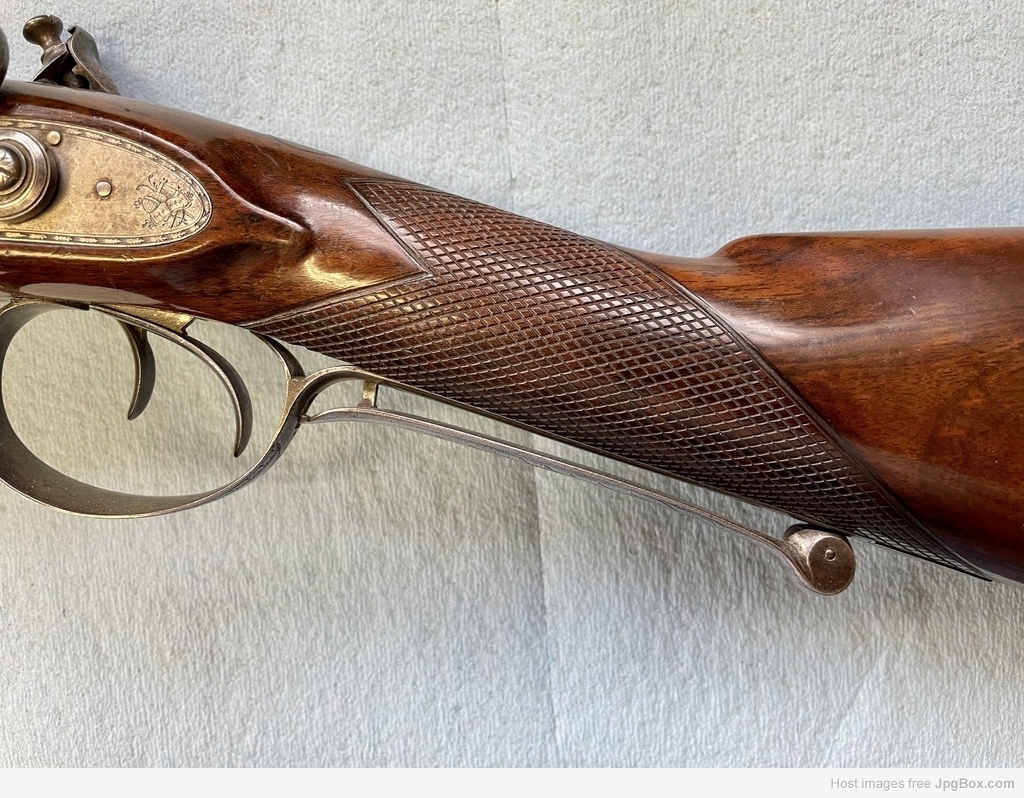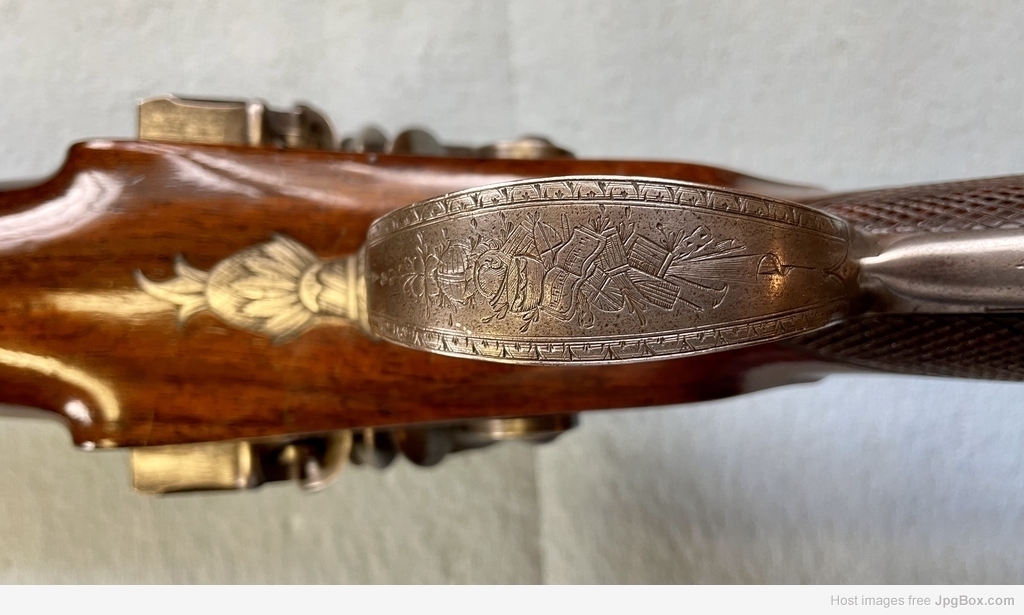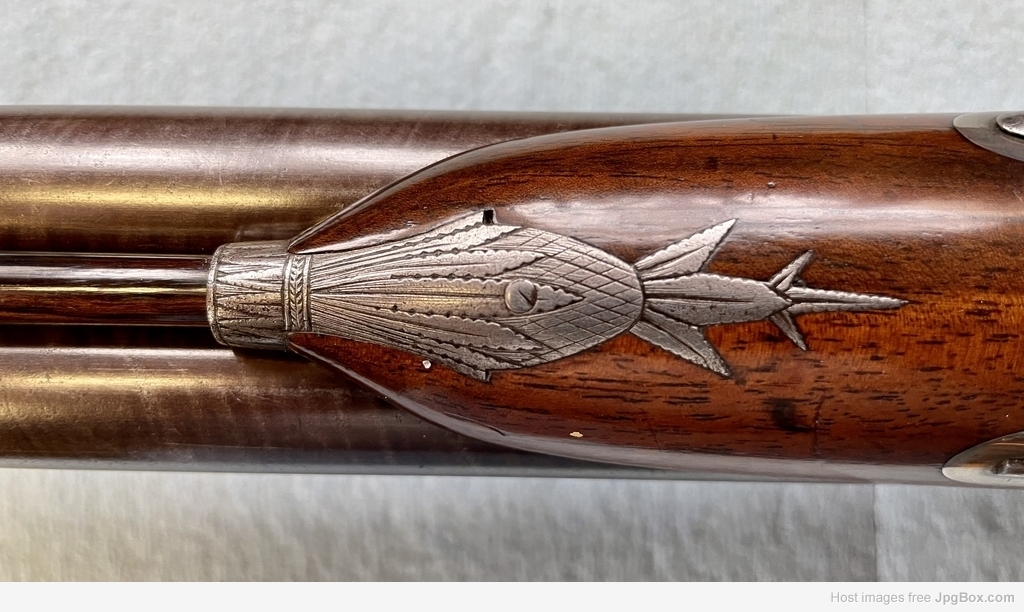Well, flintlock actions are about the most interesting mechanisms I've ever examined. When understood it becomes apparent they're incredibly complex and to work well all parts have to be balanced with others. In other words, each part has to work smoothly in unison with the whole. This shotgun, made late in the flintlock period, probably 1810-1815, is about as advanced in design as they ever were. Friction had been reduced to the minimum, springs strengthened and tuned with counteracting springs, and steel for sparking perfected. These style locks can give incredibly fast ignition. It is commonly believed that flintlocks give a "whoosh, bang". A good lock and touchole, along with a sharp flint, results in a solid "bang" with no discernable lag in firing.
Though the gun is marked "W.H. Wilson" I think it was most likely made by his relative, Alexander Wilson, late of John Manton. The two Wilsons are known to have occupied the same building on Virgo Street in London.
The gun has about every Manton patent worthwhile, including the grip safety! This safety intercepts the trigger bars. The barrels are 16 bore and made of what is known as "stub twist". Primarily iron forged from discarded handwrought horseshoe nails. This particular iron was considered to be the finest available, containing fewer impurities than any other source (see, The Gun by W. Greener, 1835). The barrels were definitely made in London. It wasn't until twenty or so years later that Continental barrels began to compete with English and finally, by the third quarter of the 19th century English welded barrels were a rarity. I believe the last barrel welded in England was about 1907.
Back to the gun. The action features Manton's patented self-priming breech and the toucholes are platinum. Much finer grained powder was used than commonly preferred today. To load the gun the frizzens were closed, powder was poured down the muzzle and when the wadding and shot was rammed home some of the fine grained powder would flow through the touchole, filling the pan.
As mentioned, the gun has incredibly modern dimensions: the stock is 14 1/4" X 1 5/8" X 2". Barrel is exactly 30" and total weight is 7 pounds 1 ounce! Balance is 5 5/8" ahead of front trigger. It's amazing to realize the double as we know it had reached its final form 200 years ago and for all practical purposes hasn't changed since.
I do not know if the gun has ever been refinished--I'd be surprised if it has not but anything done to it was a long time ago. Wood is still slightly proud in all areas. Bores are perfect (probably honed) but wall thickness at minimum if .042. Engraving is typical of the period--pineapples, drums, fifes, flags, etc. Well executed and sharp on the casehardened locks and tang. Not quite as nice on the buttplate and triggerguard, which were made of soft iron.
Wood is extremely high grade English walnut. Amazing to think it was probably planted in the 14th or 15th century! No cracks.
As you look at the photos try to envision the workman whittling out two locks from scratch that are identical twins. And the barrel forger cleaning the horseshoe nails and then fusing them into a rod capable of withstanding the pressures of a heavy charge. Remember, these barrels predate what we know as damascus, which contain significant amounts of steel for strength.
I have been very fortunate to be the custodian of this gun for the past twenty years. So very few flintlocks survived, fewer yet avoided conversion to percussion and even fewer remained in pristine condition.
I hope y'all enjoy the pictures.
Oh, if any of you ever have any flintlock questions perhaps I can help. I've shot them (not this gun) for over 50 years.
